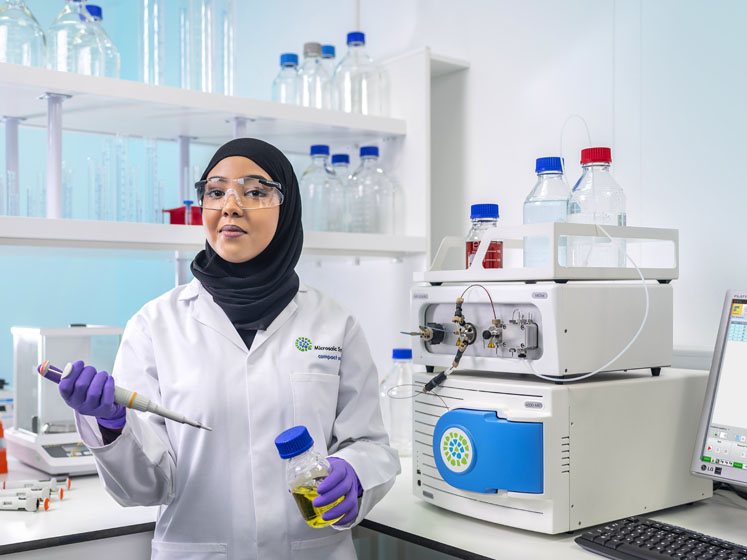Key obstacles include the optimisation of both molecular and product characterisation, as well as process control, all while delivering the highest levels of quality and consistency. Biopharmaceuticals can be very difficult to characterise and control; however, in an industry in which products are designed for patient consumption, it is critical to ensure safety, purity, efficacy and the specific functionality of a substance.
Therefore, the biopharmaceutical must be accurately characterised in a reproducible, commercially viable way.
Delivering these necessary attributes is also a primary focus for regulatory bodies to safeguard the end consumer; and, in response, governments are tightening up their biopharmaceutical regulations. To provide regulators with the assurance of consistent quality, it is critical that adequate control strategies are implemented and continuously reviewed.
This article looks at control strategies, the challenges associated with applying them to complex biopharmaceuticals and the key role that miniaturised mass spectrometry plays as a tool to support advancements in quality assurance for manufacturers.
Developing control strategies for complex biopharmaceuticals
An adequate control strategy, defined by ICH Q10, delivers a planned set of controls that are developed from current product and process understanding to ensure process performance and product quality.1
In developing a control strategy, it is first necessary to define the key physical, chemical, biological or microbiological properties of a biopharmaceutical, and the upper and lower limits that measurement values are targeted to fall within. These defined characteristics are usually referred to as critical quality attributes (CQAs) and critical process parameters (CPPs).

Richard Moseley, Chief Technologist, Microsaic Systems
In the case of small molecule drugs — which are developed using chemical syntheses — CQAs and CPPs affect the purity, release profile and stability of a drug, whereas with biopharmaceuticals, their complex nature creates additional CQAs and CPPs that can impact both safety and potency.
For example, microbial limits and storage conditions that influence biologic heterogeneity would now need to be considered. As well as this, the effect of each CQA and CPP is difficult to isolate, making it hard to determine the independent impact of each one measurement on safety and potency.
Once the CQAs and CPPs are identified, further challenges remain with the characterisation of biopharmaceutical samples. For example, in the case of proteins and cell media, the environmental conditions in which these materials are stored and processed has a significant impact on their stability and, therefore, structure.
This raises issues when using offline characterisation — when a sample is manually taken away from the reaction vessel for analysis. In offline analysis, materials that may have been stable in a reaction vessel, may no longer be stable because of the timeframe or the sample preparation method used for analysis may not be appropriate.
Either way, it is difficult to gain a sample that’s representative of the species present during the actual reaction process. Another issue with offline characterisation is that a lot of important information is lost if you only examine the final product. For example, reaction intermediates can tell researchers a great deal about the mechanism of a particular reaction and therefore enable reaction conditions to be optimised in real-time as a response to this.
When this information is lost by only sampling the end-product, so too is the opportunity for manufacturers to save time and resources on process development. Preparing samples for external offline analysis can also be inefficient in terms of resources. Often, significant quantities of costly raw materials need to be prepared with solvents for analysis; and, once used, the samples are consumed or hard to recover, contributing to significant wastage.
Combined, the challenges associated with biopharmaceuticals such as proteins and cell media, along with the limitations of offline characterisation, highlight a clear need for the inclusion of a real-time, point-of-need analytical method that can be integrated into the continuous manufacturing process.
Advancements for greater quality assurance
To resolve the issues of biopharmaceutical characterisation and process development, enhanced approaches or advanced process controls (APCs) need to be implemented. ICH Q8 and Q11 have highlighted quality by design (QbD) as a concept for developing a superior control strategy that, in turn, ensures superior product quality.
As a systematic approach to enhancing quality and safety, QbD focuses on product and process understanding, delivering better overall control of production as a result. QbD is based on sound science and quality risk management with predefined objectives. Implementing it facilitates the transition from fixed manufacturing processes to an adjustable design space.
Ultimately, QbD shifts the focus from testing, process monitoring and control to earlier on in the manufacturing process, providing important insights that can be applied to process development. This results in a higher probability of carrying the right reaction through to completion — creating the right products to a high quality, thereby saving money, time and other resources.
An example of a QbD concept, with the ability to positively shape industrial operation design, analysis and control, is process analytical technology (PAT) — wherein real-time release testing (RTRT) can be achieved, in-situ, during a reaction.

An invaluable tool to support APC
One tool, which has been particularly powerful in the characterisation of biopharmaceuticals, is mass spectrometry. Advancements in mass spectrometry have enabled enhanced selectivity, sensitivity, mass accuracy and resolution. In addition, the ability to couple mass spectrometry with different separation techniques provides new metrics that, when combined, piece together different pieces of the informatics puzzle and help operators to gain a better overall quantitative and qualitative understanding of these complex structures.
However, conventional mass spectrometry has its limitations; traditionally, products for analysis are collected, prepared and sent off for external testing in a centralised lab with specialised technicians. This process is time-consuming and expensive, and the collection of important information is delayed until after the manufacturing process is complete, which, as before, involves material and resource wastage.
With the focus shifting towards online monitoring and characterisation at the point-of-need, the proliferation of miniaturised mass spectrometry is a promising tool to enable APC and RTRT for biopharmaceuticals. Thanks to its microelectro-mechanical technology (MEMS), the key subcomponents of mass spectrometers can be miniaturised, including ion sources, mass filters, ion detectors, vacuum gauges and pumps. It is this precision engineered compact technology that is enabling in-house sample characterisation, saving time and money on external or centralised lab facilities.
Miniaturised or compact mass spectrometry opens up the opportunity to not only characterise biopharmaceuticals, but also monitor CQAs and CPPs during a continuous manufacturing process in real-time, whereby the information can ultimately feed into product and process development.
For example, in-house miniature mass spectrometry enables quality data to be collected rapidly at earlier stages in the manufacturing process, when real-time control can be implemented and data can be used to feed forward and inform upstream processes.
This, ultimately, creates a manufacturing process control system that is dynamic, responsive and therefore enhances the probability of successfully developing the right products with the required quality levels.
An example of the rich data that miniature mass spectrometry can achieve for biologics has been demonstrated through a study commissioned by Microsaic Systems and conducted by the Massachusetts Institute of Technology (MIT). This study analysed the effect of different storage conditions on IgG protein samples using fresh fed and frozen perfusion samples, stored for one week and two years respectively. The samples were characterised using Microsaic Systems’ novel miniaturised point-of-need mass spectrometer, MiD ProteinID, with miniaturised chip-based technology.
It was found that there were significant differences in the mass distribution of samples; the fresh fed batch had a uniform mass distribution, indicative of a high-quality sample, whereas the frozen perfusion sample had an uneven mass distribution, suggesting that the protein had deteriorated with time.
The results of this experiment showed that miniaturised point-of-need mass spectrometers are able to monitor these protein fragments, and even determine sample quality rapidly and in-house, without needing to send samples off to a centralised lab facility. The wider implications being that sample quality tests can be conducted with ease, earlier on in the operations process, and the information can be fed into generating procedures to allow operational adjustments in real-time.
Advanced support
Overall, miniaturised mass spectrometry is opening up new possibilities to probe the molecular structure of complex biomolecules — such as proteins and cell media — at the point-of-need, proving itself to be an invaluable analytical tool to support APC development and CQA compliance.
Thanks to this, the insight and quality of information about the samples, as well as the ability to monitor and optimise operations at earlier stages, continues to advance in tandem with the ongoing development and validation of chip-based mass spectrometry.
Reference
- www.fda.gov/regulatory-information/search-fda-guidance-documents/q10-pharmaceutical-quality-system.




